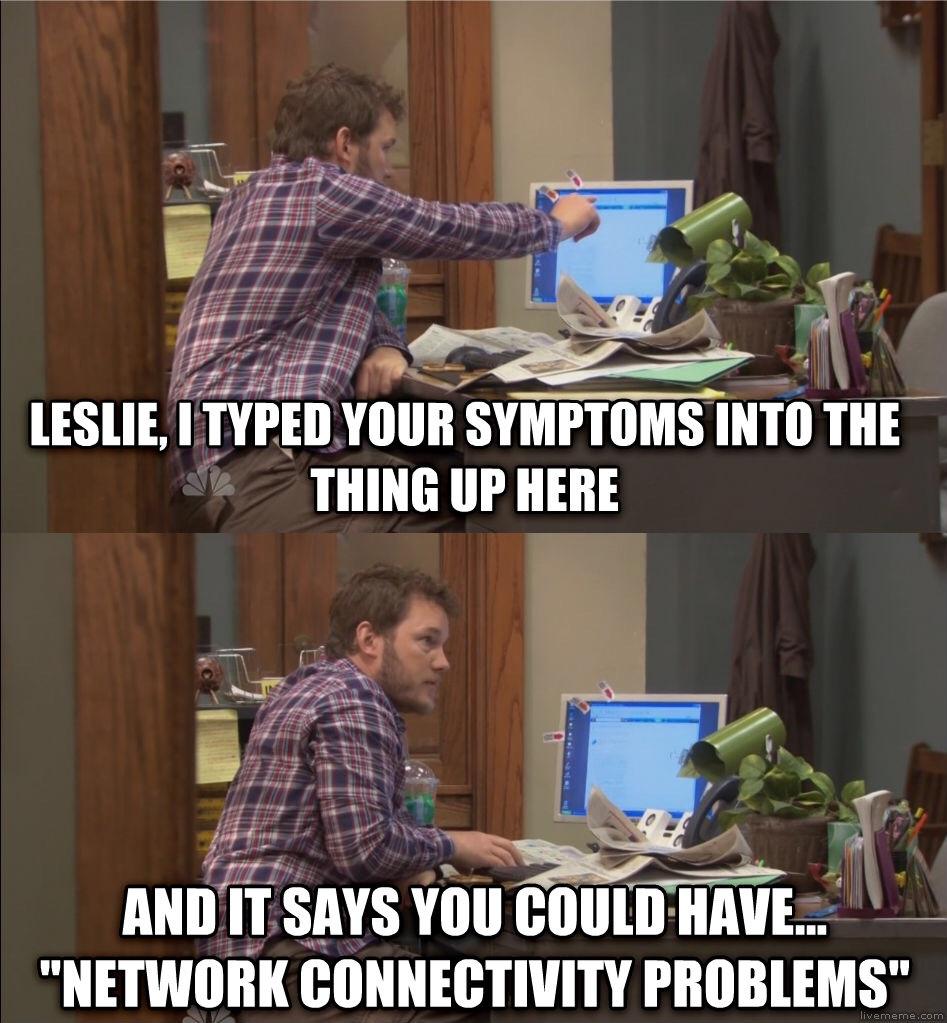What if you had a better way to ask?
We’ve all been there. A sudden symptom surfaces — a sharp pain, a lingering fatigue, a strange reaction that doesn’t quite make sense. Before you even realize it, you’re deep in the rabbit hole, typing symptoms into Google, reading Reddit threads, comparing WebMD entries, and trying to piece together your own diagnosis like an anxious detective.

What starts off as a search for understanding quickly turns into a spiral of uncertainty. The more you read, the more disconnected you feel from your body, from clarity, and from any real sense of what’s happening. You leave with five new questions, three potential conditions, and a subtle but growing fear that maybe this is more serious than you thought.
This is the trap we’ve built not out of malice, but out of momentum. The digital age gave us access to information, but not the means to interpret it well. We became health “researchers” without training, using tools that were designed for scale, not sensitivity.
Traditional search engines offer results, not relationships. They don’t ask follow-up questions. They don’t adapt to your level of understanding. And they certainly don’t know you, your context, your history, and your nuances. So we end up interpreting generic content as if it were written for us, even when it wasn’t.
The result? Information overload. Mistrust. Delayed action. Or worse — premature conclusions that bypass professional advice altogether.
But there’s a new way forward. A shift from searching to conversing. From static results to dynamic exploration. From anxious Googling to guided inquiry.
And it begins with one fundamental change: how we ask our questions.
Why Prompting Matters in Health Contexts
Most people don’t realize that when they type something like “Why am I tired all the time?” into an AI system, they’re not asking a question, they’re opening a door without setting the frame for it beforehand.
In traditional search, the burden is on you to filter through results. With AI, the burden shifts: the quality of what you receive is determined almost entirely by how clearly you define the context, the role, and the boundaries of the conversation.
That’s what a prompt is. It’s not just a question, it’s a container. A shape you give to the intelligence you’re tapping into. And in the realm of health, that shape matters deeply.
Health-related prompts are fundamentally different from prompts in most other domains.
They’re often emotionally charged.
They involve unknowns.
They carry consequences.
And they demand nuance, not absolutes.
When poorly structured, these prompts can lead to overwhelming walls of general advice, oversimplified explanations, or even dangerous conclusions.
But when approached with care, clarity, and a sense of responsibility, prompting becomes a superpower. A way to explore possibilities, synthesize information, and prepare yourself for richer conversations with medical professionals.
Think of prompting in this context like tuning an instrument. You’re not asking AI to perform a full song, you’re aligning its response to a key, a rhythm, a tempo that works for you. The more intentional the prompt, the more relevant and usable the response will be.
Most people were never taught how to prompt for their health. They type as they think. They ask as they feel. They don’t clarify the role, the limitations, or the lens they want the AI assistant to use.
And that’s where mistakes begin, not because the AI is faulty, but because the starting point is fuzzy. This doesn’t mean that an AI can’t make a mistake, but mistakes can compound on both sides unknowingly worsening the situation.
That’s why we need a method. Not to overcomplicate things, but to support the one thing most people truly want in moments of uncertainty: answers they can trust.
Which brings us to a framework I designed specifically for this kind of inquiry. A way to engage with AI as a co-pilot in your health journey, safely and effectively.
FRAME-H: A New Way to Ask AI About Your Health

When it comes to health, most people ask vague or emotionally loaded questions that don’t yield helpful answers. It’s not because they’re doing anything wrong, it’s because they’ve never been shown how to structure their inquiry in a way that’s both clear and safe.
That’s why I adapted the original FRAME method into a version specifically for health and wellness — I call it FRAME-H.
It’s not just about optimizing the AI’s response, it’s about protecting your privacy, clarifying your intent, and guiding the interaction toward something that empowers, rather than confuses you.
Here’s how it works:
F — Focus: What are you actually trying to understand?
Start by defining the core question or concern, but frame it in a way that invites exploration, not panic.
- Poor: “Do I have cancer?”
- Better: “What are some possible causes of a persistent dull ache in my lower left abdomen that occurs after eating?”
Your focus isn’t about chasing a diagnosis. It’s about describing a pattern that can then be investigated and analyzed from multiple angles.
R — Role: Who do you want the AI to become?
AI can emulate many voices: a nutritionist, medical researcher, fitness coach, or even a curious friend summarizing complex data. Choose your guide wisely depending on the context.
- Example: “Act as a health journalist who breaks down medical studies for the public.”
- Or: “Take on the role of a functional medicine practitioner helping someone explore root causes.”
The right role determines tone, depth, and even the vocabulary the AI uses in its responses and analysis.
A — Angle: What kind of answer are you looking for?
Are you looking for lifestyle-based possibilities? Questions to ask your doctor? A deeper understanding of how the body works?
- Example: “I’d like to know which body systems might be involved and what types of tests are usually run in situations like this.”
This sets a direction and a lens through which the AI can interpret your request.
M — Method: What sources or constraints should be used?
This is where you define the boundaries, what kind of data the AI should prioritize, and how it should structure the response.
- Example: “Please only reference peer-reviewed studies from the last 5 years.”
- Or: “Summarize your answer using bullet points and flag anything that would require urgent attention from a real doctor.”
This ensures the output is usable and relevant, not overwhelming.
E — Edges: What should be avoided, protected, or disclosed with caution?
Health data is sensitive, that’s why HIPAA (Health Insurance Portability and Accountability Act) exists. Your prompt should avoid personally identifiable information and instead focus on hypothetical or generalized language.
- Example: Instead of: “I, Alex, age 44, have…”
Use: “In the case of a 44-year-old male experiencing…”
You can also instruct the AI to avoid certain things:
- “Avoid making conclusive statements.”
- “Avoid assuming a diagnosis or replacing professional medical advice.”
Edges exist to create safe boundaries around the conversation.
H — Human Interpretation: What will you do with the answer?
This final piece isn’t something you type, it’s something you remember. AI’s response is a tool, not a verdict. It’s input for you to reflect on, explore, and — when needed — bring into a conversation with a licensed healthcare provider to help interpret its implications for your health.
This final letter reminds you:
“AI can guide, but only you and your doctor can decide.”
FRAME-H in Action
Let’s bring it all together in a real-world example:
A 44-year-old male experiences a dull ache in the lower left abdomen, especially after meals.
Act as a health researcher who breaks down and explains complex data for the general public.
What systems or organs might be involved? I'd like to use this to better understand what questions to ask my doctor during my upcoming appointment.
Please summarize the questions in bullet points using peer-reviewed studies or trusted sources. List the questions in order of importance.
Avoid making definitive diagnoses or offering medical advice.
Here’s how the prompt breaks down using FRAME-H:
- F – Focus: A 44-year-old male experiences a dull ache in the lower left abdomen, especially after meals.
- R – Role: Act as a health researcher who breaks down and explains complex data for the general public.
- A – Angle: What systems or organs might be involved? I’d like to use this to better understand what questions to ask my doctor during my upcoming appointment.
- M – Method: Please summarize the questions in bullet points using peer-reviewed studies or trusted sources. List the questions in order of importance.
- E – Edges: Avoid making definitive diagnoses or offering medical advice.
- H – Human Interpretation: [Happens during the upcoming appointment with the medical professional]
The response? Context-aware. Specific. Cautious. And far more empowering than a scattered query like: “Why does my stomach hurt?”
Why FRAME-H Matters
You don’t need to memorize every step. But even loosely following this pattern gives you clarity, structure, and protection. It transforms your questions from reactive to intentional, and that’s where real transformation begins.
The next step? Learning how to stay safe, private, and responsible as you start exploring.
Privacy and Safety: The Foundation of Smart Health Prompting
Before diving into health conversations with AI, remember: you’re not speaking to a doctor — you’re interacting with a language model. It doesn’t know who you are, and it shouldn’t.
Here are three essential safety principles:
1. Protect Your Identity
Never include your full name, location, or personal identifiers. Instead of “I, Alex, am experiencing…” use “A 44-year-old male experiencing…”
2. Generalize Details
You don’t need to lie, just avoid over-disclosure. Say “a common SSRI” instead of “50mg sertraline prescribed by Dr. X on November 3rd.”
3. Remember the Boundaries
AI responses are hypothetical, not personal medical advice. Use them to prepare for appointments, not replace them.
The key insight: How you share matters as much as what you ask. Safety isn’t bolted on afterward, it’s built into every prompt from the start.
Tomorrow, I’ll dive deeper into advanced privacy techniques, anonymization strategies, and how to protect your health data while still getting meaningful insights from AI.
Turning AI Into a Health Ally (Not an Authority)
At its best, AI doesn’t replace your doctor, it prepares and allows you to show up differently.
It helps you gather your thoughts.
Clarify your patterns.
Understand your options.
And ask sharper, more informed questions.
In this way, AI becomes a strategic ally. Not in the sense of giving you medical answers, but in helping you frame your own understanding before walking into a real consultation.

Because if we’re honest, most people go to the doctor already overwhelmed. They forget to mention symptoms, don’t know what to ask, and leave feeling like their concerns weren’t fully heard. That’s not always because of bad medicine — often, it’s just a lack of preparation.
AI can change that.
How AI Can Support (Without Overstepping)
Here are just a few ways you can use AI to support your health journey:
- Pre-appointment clarity:
“What are smart questions to ask a doctor about recurring chest tightness that’s not linked to exertion?” - De-jargonizing a diagnosis:
“Explain what a ‘hiatal hernia’ is in plain language, and what people with it typically experience day to day.” - Understanding trade-offs:
“What are the typical pros and cons of using [X medication] for managing [Y condition]?” - Summarizing studies:
“Summarize the latest clinical research on mindfulness-based stress reduction for people with chronic pain.” - Creating a post-visit plan:
“Based on a diagnosis of [condition], what kinds of lifestyle changes or self-care practices are usually recommended? Please include sources.”
Notice the pattern: none of these prompts ask for a diagnosis or definitive judgment. Instead, they seek comprehension, preparation, and self-empowerment.
That’s where AI shines — not in replacing expertise, but in expanding your readiness to receive it.
The Real Power is in the Partnership
AI will never know your body better than you do. And it will never understand the full picture the way a trained healthcare professional can.
But it doesn’t need to.
Its power is in helping you close the gap. The gap between symptoms and language, between confusion and curiosity, between passive participation and active ownership.
When you stop looking for a final answer and start using AI to ask more thoughtful, more embodied questions, something shifts. You place yourself at the center of your health journey again — not the system, not the software, and not the fear.
And that’s when the conversation really begins.
A Better Way to Ask
AI won’t fix your health. It won’t give you certainty.
But it can give you language — and sometimes, that’s what opens the door.
A single, well-framed question can shift your entire posture from confusion to curiosity, from waiting to preparing, from silence to voice.
“You don’t need to know everything. You just need to begin the conversation differently.”
And now, with the help of AI, you can.
Because when you learn how to ask better questions, you’re not just improving your prompts, you’re reclaiming your power.
And that, more than any diagnosis, is where true healing begins.
See you in the next insight.


